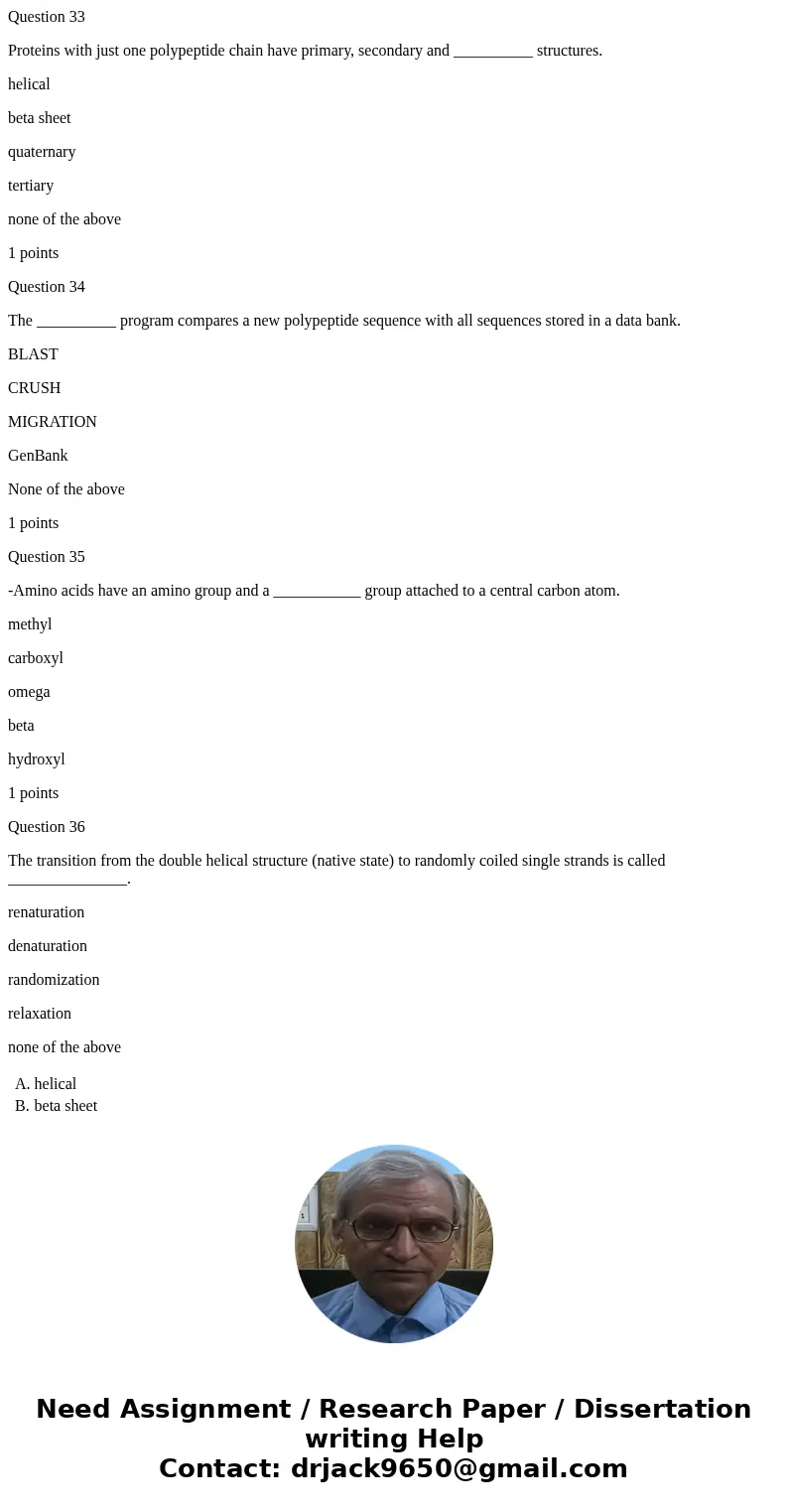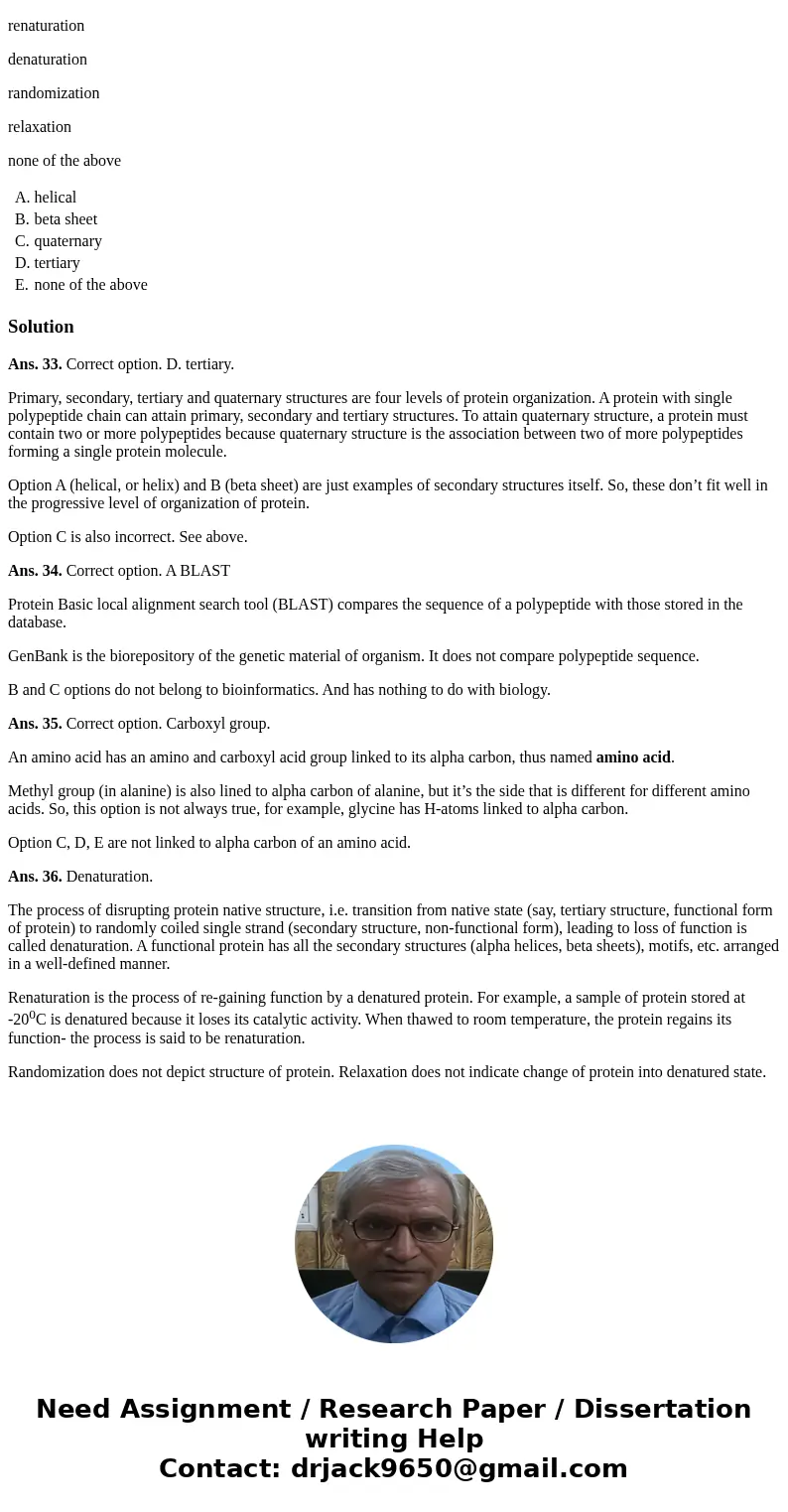Question 33 Proteins with just one polypeptide chain have pr
Question 33
Proteins with just one polypeptide chain have primary, secondary and __________ structures.
helical
beta sheet
quaternary
tertiary
none of the above
1 points
Question 34
The __________ program compares a new polypeptide sequence with all sequences stored in a data bank.
BLAST
CRUSH
MIGRATION
GenBank
None of the above
1 points
Question 35
-Amino acids have an amino group and a ___________ group attached to a central carbon atom.
methyl
carboxyl
omega
beta
hydroxyl
1 points
Question 36
The transition from the double helical structure (native state) to randomly coiled single strands is called _______________.
renaturation
denaturation
randomization
relaxation
none of the above
| A. | helical | |
| B. | beta sheet | |
| C. | quaternary | |
| D. | tertiary | |
| E. | none of the above |
Solution
Ans. 33. Correct option. D. tertiary.
Primary, secondary, tertiary and quaternary structures are four levels of protein organization. A protein with single polypeptide chain can attain primary, secondary and tertiary structures. To attain quaternary structure, a protein must contain two or more polypeptides because quaternary structure is the association between two of more polypeptides forming a single protein molecule.
Option A (helical, or helix) and B (beta sheet) are just examples of secondary structures itself. So, these don’t fit well in the progressive level of organization of protein.
Option C is also incorrect. See above.
Ans. 34. Correct option. A BLAST
Protein Basic local alignment search tool (BLAST) compares the sequence of a polypeptide with those stored in the database.
GenBank is the biorepository of the genetic material of organism. It does not compare polypeptide sequence.
B and C options do not belong to bioinformatics. And has nothing to do with biology.
Ans. 35. Correct option. Carboxyl group.
An amino acid has an amino and carboxyl acid group linked to its alpha carbon, thus named amino acid.
Methyl group (in alanine) is also lined to alpha carbon of alanine, but it’s the side that is different for different amino acids. So, this option is not always true, for example, glycine has H-atoms linked to alpha carbon.
Option C, D, E are not linked to alpha carbon of an amino acid.
Ans. 36. Denaturation.
The process of disrupting protein native structure, i.e. transition from native state (say, tertiary structure, functional form of protein) to randomly coiled single strand (secondary structure, non-functional form), leading to loss of function is called denaturation. A functional protein has all the secondary structures (alpha helices, beta sheets), motifs, etc. arranged in a well-defined manner.
Renaturation is the process of re-gaining function by a denatured protein. For example, a sample of protein stored at -200C is denatured because it loses its catalytic activity. When thawed to room temperature, the protein regains its function- the process is said to be renaturation.
Randomization does not depict structure of protein. Relaxation does not indicate change of protein into denatured state.


 Homework Sourse
Homework Sourse